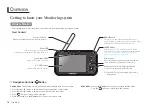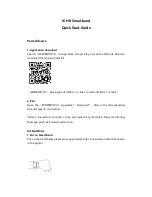
3.1 Power Installation
Only qualified individuals should perform power termination to the display.
It is the responsibility of the electrical contractor to ensure that all electrical
work meets or exceeds local and national codes.
Daktronics DataMaster displays have been designed for simple hook-up of power and
signal. Correct power installation is imperative for proper display operation. Improper
installation could result in serious damage to the equipment and could be hazardous to
personnel.
The DataMaster outdoor displays require a dedicated, 120 V circuit for incoming power. The
display itself has no breakers or fuses. Refer to the
Shop Drawing
for the specific display
type and size
to determine maximum power requirements for this model.
It is critical that the display circuit be fused at 15 A, and that all conductors used must
be designed to pass a 15 A current in normal operation. Failure to meet wiring and
over-current protection device requirements is a violation of the National Electrical
Code
®
and will void the display warranty.
Grounding
Displays MUST be grounded according to the provisions outlined in Article 250 of
the National Electrical Code and according to the specifications in this manual.
The display system
must
be connected to an earth electrode installed at the display. Proper
grounding is necessary for reliable equipment operation. It also protects the equipment from
damaging electrical disturbances and lightning.
The display must be properly grounded or
the warranty will be void
.
Refer to
Schematic
Drawing A-299746.
Important points about grounding:
•
Follow local and national codes: The material of an earth-ground electrode differs from
region to region and from conditions present at the site. Consult the National Electrical Code
and any local electrical codes that may apply.
•
Support structure
cannot
be used as an earth-ground electrode: The support is generally
embedded in concrete. If embedded in earth, the steel is either primed or it corrodes, making
it a poor ground.
•
One grounding electrode for each display face: The grounding electrode is typically one
grounding rod for each display face. Other grounding electrodes as described in Article 250
of the National Electric Code may be used.
•
Resistance to ground 10 ohms or less: This is required by Daktronics for proper display
performance. If the resistance to ground is higher than 10 ohms, it will be necessary to install
additional grounding electrodes to reduce the resistance. The grounding electrode should be
installed within 25 feet of the base of the display. The grounding electrode must be connected
to the ground wire inside the display.
6
Electrical Installation















































